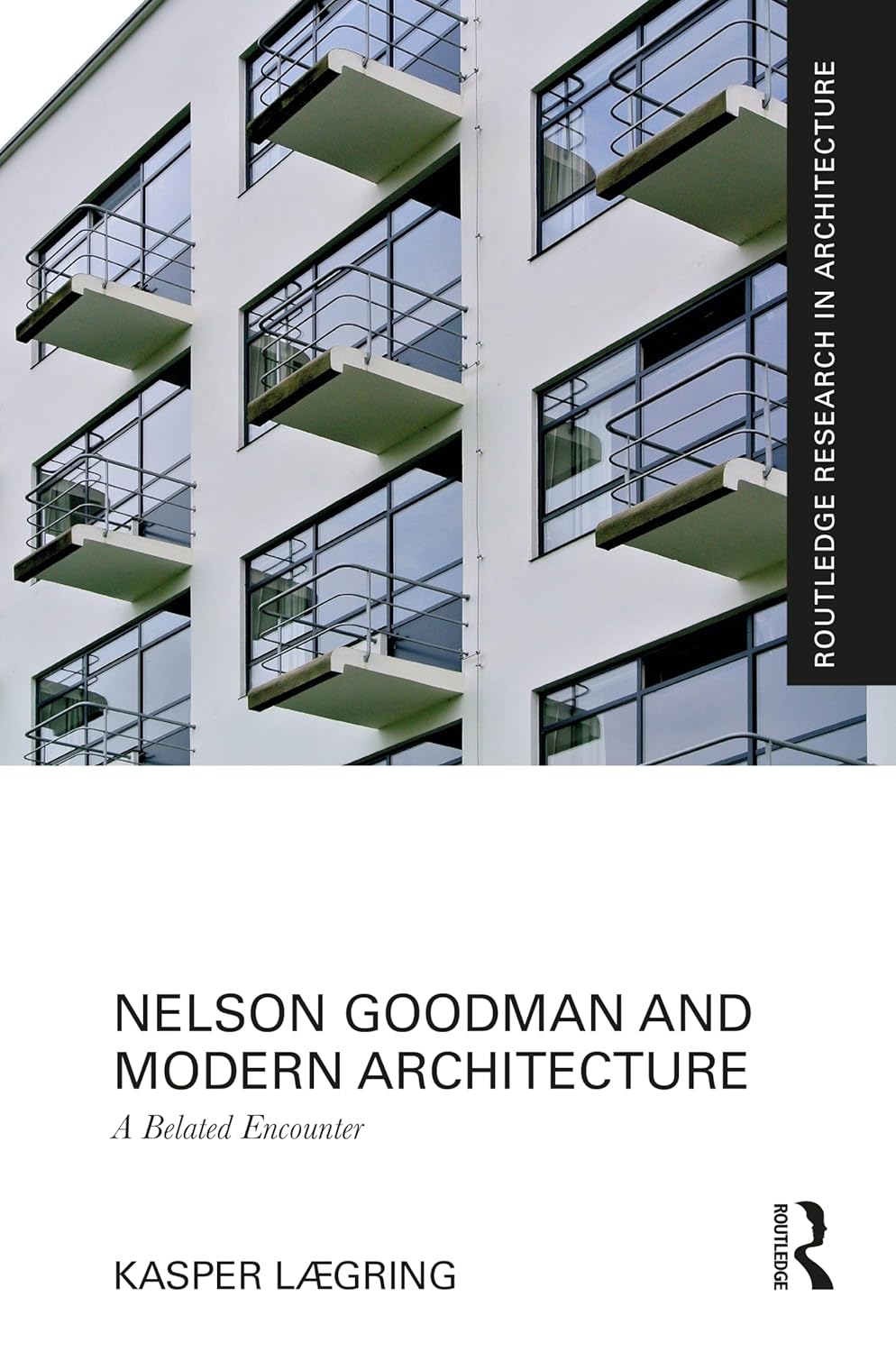Nelson Goodman and Modern Architecture: A Belated Encounter

Nelson Goodman and Modern Architecture: A Belated Encounter. Routledge Research in Architecture. New York: Routledge, 2024, https://doi.org/10.4324/9781003323617. ISBN 9781032347424 eBook ISBN 9781003323617
This book orchestrates a convergence of two discourses from the 1960s—Nelson Goodman's aesthetic theory on one side and critiques of modern architecture articulated by figures like Peter Blake, Charles Jencks, and Robert Venturi/Denise Scott Brown on the other. Grounded in Goodman's aesthetic theory, the book explores his conceptual framework within the context of modern architecture.
At the heart of the investigation lies Goodman's concept of exemplification. While his notion of denotation pertains to representational elements, often ornaments, in architecture, exemplification accentuates specific formal properties at the expense of others, including color, spatial orientation, transparency, seriality, and the like. Supplemented by findings from phenomenology, the book traces these effects in buildings, notably those by Ludwig Mies van der Rohe, Walter Gropius, Le Corbusier, and Frank Lloyd Wright—all key figures in the critiques of modern architecture.
Employing Goodman's framework, the book aims to address accusations of emptiness and alienation directed at modern architecture in the postwar era. It illustrates that modern architecture symbolizes aesthetically in a fundamentally different way than architecture from earlier periods.
This book will be of interest to architects, artists, researchers, and students in architecture, architectural history, theory, cultural theory, philosophy, and aesthetics.
Endorsements
"In this insightful and innovative book, Kasper Lægring draws on Nelson Goodman's rigorous constructivist epistemology of symbol systems—especially Goodman's logical typology for investigating their degree of "notationality"—to reassess the watershed transformation between pre modernist and modernist architecture in the mid-twentieth century. Partly through shedding almost all "denotation," or reference to an external object, modernist architecture could sometimes approach the formal conditions of a pure notation. Nonetheless, it continued to work representationally by way of privileging "exemplification" (as analyzed by Goodman), both literal and metaphorical, and in this regard its "aesthetic symbolization did not diminish." Lægring carefully and convincingly assesses the "degree of exemplification"—which can be surprisingly various—in a range of different projects by Ludwig Mies van der Rohe, Walter Gropius, Le Corbusier, and Frank Lloyd Wright. He shows not only that anti modernist objections to the formality and abstraction of high modernist architecture—alienating and even brutal—aren't inherently misguided. But he also shows that its supposed ideal formality is not "meaninglessness"; rather, it creates a "choreographed appearance" that can be the vehicle of new forms of expression and allusion. Neither a defense nor a rejection of modernist architecture, Lægring's subtle and sensitive analysis will appeal not only to historians and theorists of architecture and the modernist arts but also to philosophers, cognitive psychologists, and others interested in the symbol systems by which architecture and other arts help make our worlds."
Whitney Davis, George C. and Helen N. Pardee Distinguished Professor Emeritus of History and Theory of Ancient and Modern Art, University of California at Berkeley, USA
"Among the merits of this book is to give semiotics back its proper place in the theory of architecture. To this end, Kasper Lægring goes back to Nelson Goodman's aesthetic theory of 1968. He rightly places Goodman's concept of exemplification at the center of his analysis of classical modern architecture. Lægring shows how, on the basis of Goodman's aesthetics, it is not only possible to profitably reassess modernist architecture and the canonized criticism of its protagonists. Beyond this on the basis of semiotics the book succeeds in recalibrating the architecture of the 21st century. How the author links the historical foundation of contemporary architecture with its theoretical conceptualization makes the book so enriching and timely."
Jörg H. Gleiter, Professor of Architectural Theory, Technical University of Berlin, Germany
"Kasper Lægring's book, Nelson Goodman and Modern Architecture, proposes that the concept of exemplification, as offered in Goodman's understanding of art in Languages of Art, serves as a key aesthetic reference mode when experiencing modern architecture. This perspective can account for the distinctive character of modern architecture. Exemplification is one of the dominant features of symbol systems cited by Goodman, calling for both possession and reference as properties of aesthetic symbols, including buildings. Lægring's study focuses on the symbolic features of individual buildings, and by bringing a phenomenological perspective to the study of modern architecture, he insightfully combines Goodman's aesthetic theory with developments in architectural phenomenology. In this book, Lægring effectively applies Goodman's take on modern architecture to advance our understanding of both architectural symbolism and Goodman's critical insights into modern architecture."
Curtis L. Carter, Professor of Philosophy, Marquette University, USA